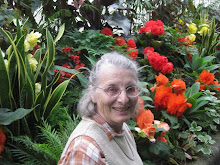Our first free weekend in Takapuna, we headed north on Highway 1, planning our trip with the help of the wonderful women at the local i-site. (All towns of significant size, which does not have to be very large, maintain an tourist information center.) Our destination was the town of Paihia noted for nothing more than its history, harbour and beach. We found that when one waits until Saturday morning to make accommodation reservations for that night, there may be difficulty during the summer holiday season. So we ended up booked into a backpacker lodge for the outrageous sum of $115.00 per night and happy to get it. Our room faced a broad enclosed bolanji*.
Despite the room's location at the back of the lodge on 3rd floor, we could hear into the wee hours of the morning, the weekend party on the floor below and in the attached bar out front. That was all part of the experience.
We asked the lodge manager what there was to do here and his suggestion was that we leave! Not too far away, just take the ferry to Russell, a 20 minute sail across the bay. This we did. Russell was the first capitol of New Zealand. It's fame arises not from political action but from the drunken brawls, brothels, and bawdy life of the whalers and other seafarers. It is now a tiny town with a large yacht basin, a deep sea fishing tourist trade, boutique shops, artist galleries and trendy restaurants.
Arriving at the quay, a sport fishing boat had just docked and we got a look at the striped marlin that was
captured, only one of a dozen brought in that day. I felt sorry for the marlin, such a beautiful fish to be destroyed. There has to be something wrong with that!
We walked about the town stopping to browse in a shop with exquisite glass and wood sculpture artistry. It took maybe 20 minutes all told. Then we dined at Isabella's Restaurant celebrating Valentine's Day.
On Sunday, we drove 5 minutes up the road to Witangi/Whitangi. We have been hearing about Witangi for the last three years. Every year about this time, Witangi Day is celebrated. This is an opportunity to honour the first human inhabitants of New Zealand, the Maori. One of our goals in this trip was to visit this famous location. We were surprised and pleased to find it well organized and developed for tourists.
The significance of Witangi is that it was here an historic treaty was drawn up between the European settlers and the Maori, including authority over the land. Unfortunately the English was translated in an ambiguous way so it was understood by the Europeans one way and by the Maori another way. The fight about how the treaty should be interpreted continues.
We wisely paid for a guided tour by a Maori descendant of several historic Maori chiefs tracing her lineage back to the wakas (canoes) with which her ancestors first landed on these islands. A huge replica that could hold over 120 individuals reminded us of the Snake Boats we saw in India. There is a strong connection between the Polynesian peoples and Asians. The Polynesians, of which Maori are one group, are thought to have originated in Taiwan. They have populated parts of Malaysia, Melanesia, Oceania, Hawaii, and New Zealand. Obviously they were skilled navigators and sailors. There is evidence the Polynesians traded with South American tribes as well as with each other. Our visit included visits to a museum and a Maori meeting house.
A cultural performance featured audience involvement, much to the discomfiture of the Kiwi Traveler and
Consort. Performing the haka**, the guys definitely had more fun that the women. The women just twirled balls on a string. Traditional gender roles in the various tribes are distinct and separate.
*Bolanji is a family-coined word to describe an outside space that is not a balcony, porch, or patio. In other words, it defies definition.
**The haka is a ritual performed by Maori men when strangers or visitors come to the marae (communal living compound). It is quite fierce, the purpose of which is to discourage and frighten approaching individuals who may have evil intent. The men formed the frontal barrier in the marae and the women and children were behind them for protection. The ancient Maori were warriors and cannibals, tribe against tribe. Now New Zealand rugby has adopted the haka to intimidate their opponents on the field. If you have an opportunity, watch the opening of an All-Blacks international rugby match for a vigorous version of the haka.
Cheers,
Kiwi Traveler







